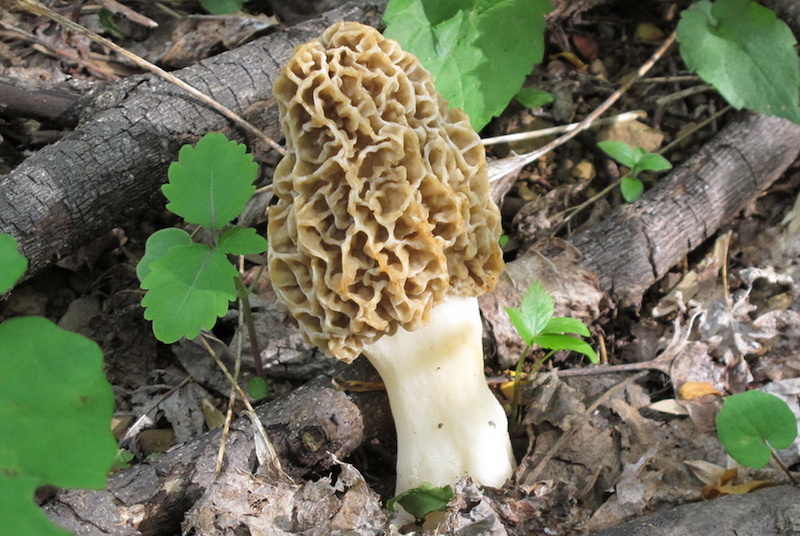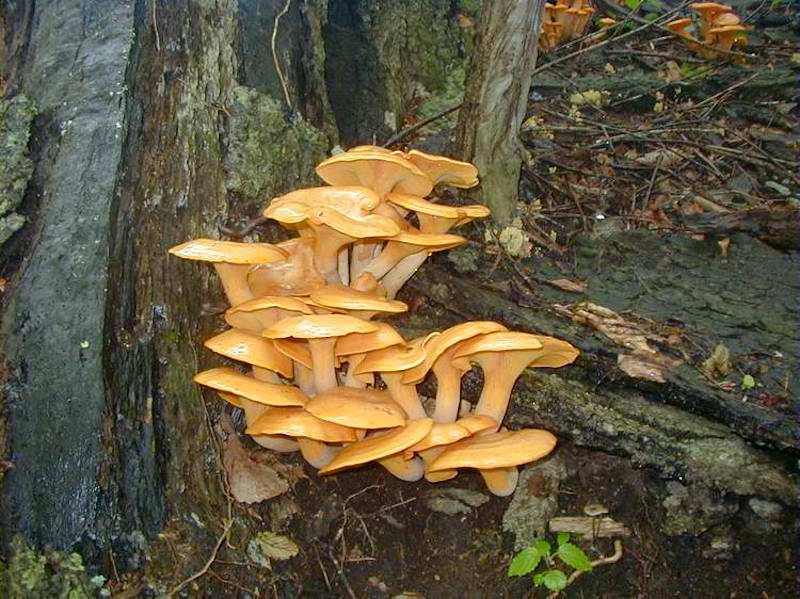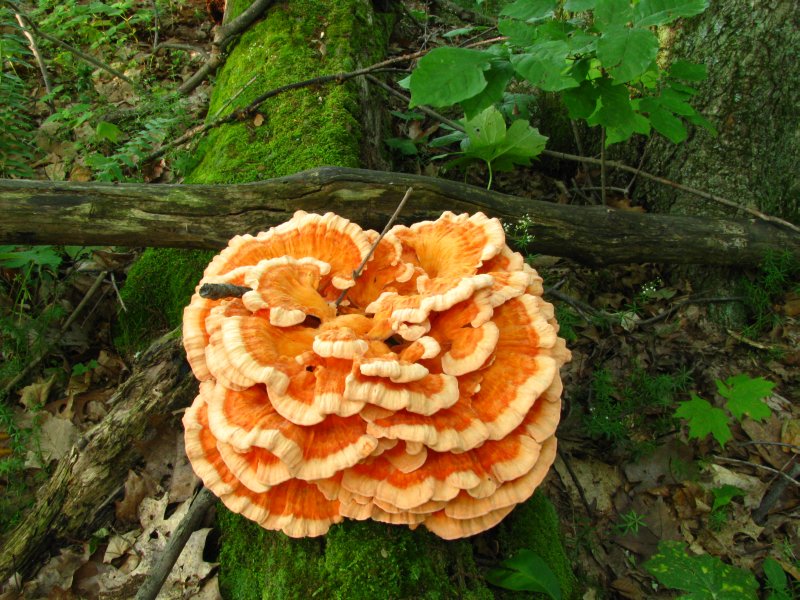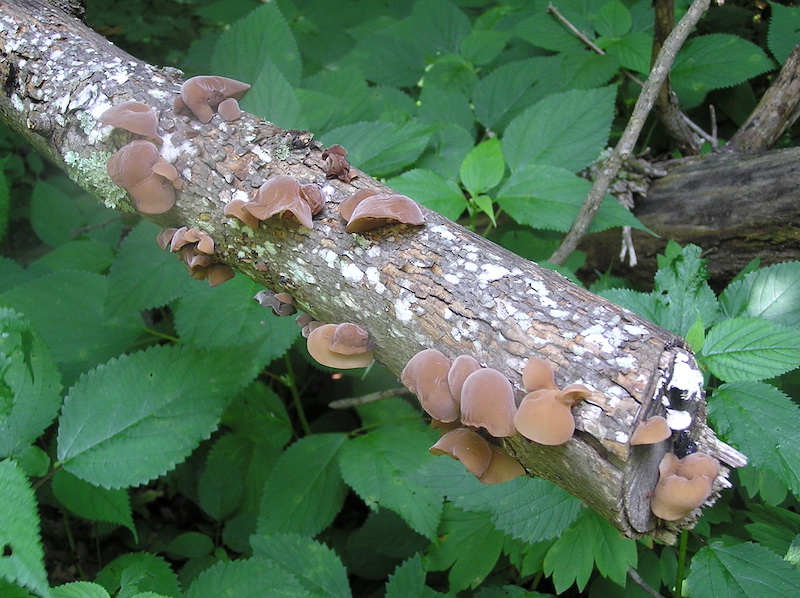
There’s no simple way to tell if a wild mushroom is a poison mushroom. To know for sure, you have to identify it and learn about it. Many mushrooms are not poisonous and some are edible. The number of edible species varies by location. For instance, the Alabama Mushroom Society has 18 common edible mushroom species listed on its website. But beware. A few edible species have poisonous lookalikes. Take extra care in scrutinizing wild mushrooms for subtle details. It can make the difference between a close call and a trip to the emergency room – or the morgue!
The American Association of Poison Control Centers reported that in 2019, there were 5,799 mushroom poisonings, including two deaths. Many of those cases were likely due to accidental ingestion of a mushroom that was thought to be edible.
To avoid being part of the statistics in a future report, really get to know the wild mushrooms in your area before attempting to eat them. The tips below can help.

Top tips for learning about mushrooms
Mushrooms are the spore-bearing fruiting bodies of a network of fungi. Sometimes the fungi live underground. Or they live in other organic mediums, such as dead trees. Not all fungi species produce mushrooms, but for those that do, each species bears a distinctive mushroom form. When conditions are good for spore dispersal, often following rain, the mushrooms emerge, release spores, and shrivel up, all within just a few days. Here are some tips, if you want to learn about mushrooms.
1. If you’re really interested in eating wild mushrooms, you need to dig deep into identifying them. There are excellent fungi field guides available for different geographic areas. Also, iNaturalist has a simple guide to common North American mushrooms by season: spring, summer and fall. Remember, not all the species in those compilations are edible!
2. Ideally, you will work with experienced mushroom-foraging mentors. Why not take it a step further and learn from local experts? Join a mycology club. For the U.S. and Canada, the North American Mycological Association has a list of clubs for each state or province.
3. If you do decide to take the plunge: when collecting edible mushrooms, pick fresh specimens. You want those that haven’t yet deteriorated and that don’t show signs of being picked apart by animals and insects. It should go without saying that you want to avoid collection areas with chemical contamination such as pesticides, lead, and petroleum products.
4. If you’re confident the mushrooms you picked are edible, always cook them well. Many health experts recommend cooking mushrooms to destroy toxins found in its raw form. Cooking also makes mushrooms more digestible, breaking down tough cell walls to release nutrients such as proteins, B and C vitamins, and minerals. And even then, if you’re eating a wild mushroom for the first time, eat a small amount of the cooked mushroom to see if you have an allergic reaction to it.
By the way, some mushroom species are seasonal, while others are more broadly distributed through the growing seasons, depending on your location. In spring, morels are a big favorite among mushroom foragers. In summer, mushroom hunters start seeing another popular mushroom, the chanterelles. Fall is perhaps the most interesting time for mushroom enthusiasts as many fungus species produce mushrooms during this season. Edible mushrooms in fall include chanterelles, chicken-of-the-woods, king bolete, lion’s mane, and puffballs.

Poison mushrooms can resemble edible mushrooms
During a talk to the Natural History Society of Maryland in June 2021, Washington, D.C., mushroom expert William Needham told us that there are about 150,000 named fungi species. A few of them are deadly, but some of those deadly fungi are quite common.
Needham talked about some common edible mushrooms and their poisonous lookalikes that are responsible for many poisonings each year.
In spring, mushroom hunters eagerly seek out morels (Morchella spp.), prized for their distinctive taste. They’re found growing in the ground under certain tree species, such as tulip poplars, hickory, and elm. Morels should be cooked because they are toxic when raw and can make you sick. But beware the brain mushroom (Gyromitra esculenta), a species that resembles morels. They’re very poisonous due to a chemical called gyromitrin, which contains monomethylhydrazine, a component of rocket fuel. Eating these “false morels” can make you sick and in some cases, cause death.
Meadow mushrooms (Agaricus campestris) are related to the button mushrooms you purchase at the store. These mushrooms, identified by their pink gills when fresh, are often found in fairy rings in pastures, garden lawns, and compost piles. There is, however, a dangerous doppelgänger to meadow mushrooms, what Needham says is the most important one you should learn: Amanita bisporigera, or the destroying angel. They look like meadow mushrooms, grow in the same habitats, and are very common. These poison mushrooms cause liver damage and can kill you. Another toxic lookalike, that causes gastrointestinal distress, is a common species called false parasol (Chlorophylum molybdites), the most frequently eaten poisonous mushroom in North America.

The beautiful yellow- or orange-colored chanterelle (Cantharellus spp.) mushrooms emerge from the ground at the base of trees. Instead of fine-edged gills like button mushrooms, chanterelles have ridges on the undersides of their caps. Chanterelles also have a poisonous lookalike, the jack-o-lantern (Omphalotus illudens) or false chanterelle. How do you tell them apart? Unlike chanterelles, jack-o-lanterns have fine gills under their caps and grow on wood. Eating jack-o-lanterns won’t kill you but will cause vomiting and diarrhea for several days.

Other edible mushrooms
There are other edible mushrooms that don’t have doppelgängers but it’s still important to be absolutely sure you’ve identified them correctly.
Hen-of-the-woods or maitake (Grifola frondosa), a type of polypore mushroom, is considered a medicinal fungus. Another popular polypore is the edible chicken-of-the-woods (Laetiporus sulphureus). While not considered a medicinal fungus, it does taste pretty good. Needham says it reminds him of chicken breast meat. Both mushrooms can grow to be quite large.
Two examples of edible gelatinous mushrooms are tree ear (Auricularia auricula) and witches’ butter (Tremella mesenterica). They’re not particularly nutritious, and are low in protein compared to other mushrooms.

You may encounter mushrooms that look like sea corals. These are the beautiful coral fungi. They’re generally found on logs. One well-known edible among them is the cauliflower mushroom (Sparassis radicata).
Another type of mushroom, seen in late summer and fall, belongs to the the tooth fungi group. The most notable of them is the lion’s mane mushroom (Hericium erinaceus).

Puffballs are round or pear-shaped, and most of them are edible. Some, like the giant puffball (Calvatia gigantea) can grow to the size of a soccer ball. If you cut a puffball open and it’s still white inside, the mushroom is still fresh.
Boletes are mushrooms with fleshy stalks that emerge from the ground. Most are generally edible, including the king bolete (Boletis edulis) and old-man-of-the-woods (Stobilomyces floccopus). Some mushroom experts recommend that you stay away from certain colored boletes that taste bitter and turn blue when you push your finger on it.
Other edible mushrooms to look for are the honey mushroom (Armillariella mellea) and oyster mushrooms (Pleurotus ostreatus). Honey mushrooms, like morels, must be well cooked to destroy toxins.

Other mushrooms to avoid
Some mushrooms, like the red-and-white fly agaric (Amanita muscaria), contain psychoactive chemicals that can cause trance-like states and hallucinations. It goes without saying … treat these types of mushrooms with extreme caution.
Bottom line: if you’re interested in collecting and eating wild mushrooms, learn everything you can about identifying safe-to-eat species in the field.











